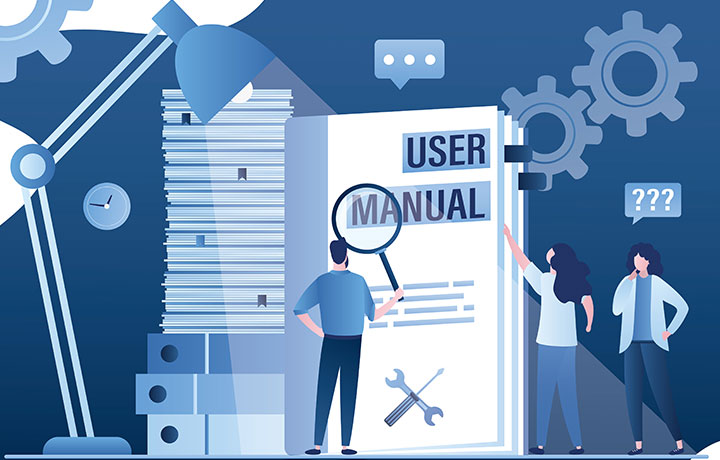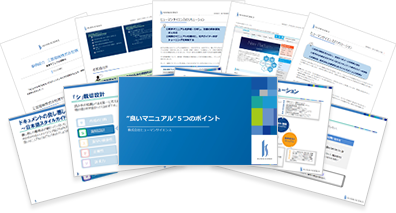
Hello! I am Consultant S.
I usually provide support for improving manuals and FAQs for companies in the manufacturing and human resources industries.
Without further ado, have you all heard the term "RPA"? "RPA" has become an important keyword in recent years for companies looking to improve operational efficiency and advance digital transformation (DX). In the manufacturing and human resources industries that I oversee, there are many companies that are considering utilizing RPA to enhance their operational efficiency.
In this blog, we will provide a detailed explanation of what can be achieved with RPA and what challenges are involved in its implementation. Additionally, we will also discuss the key points of RPA implementation from the perspective of knowledge management, which is one of our company's strengths.
- Table of Contents
-
- 1. Basic Knowledge of RPA
- 1-1. What is RPA?
- 1-2. Benefits of RPA
- 1-3. Differences from AI
- 1-4. Three Classes of RPA
- 2. What can be done with RPA
- 2-1. Data Entry
- 2-2. Information Gathering and Data Extraction
- 2-3. Report Creation and Submission
- 2-4. Workflow Automation
- 2-5. Monitoring of Business Processes
- 2-6. Automation of Backup and Restoration
- 3. Successful Cases of RPA
- 3-1. Case Study of Online Banking
- 3-2. Case Study of Beverage Sales Company
- 3-3. Case Studies of Manufacturing Companies
- 4. Key Points for Successful RPA Implementation
- 4-1. Organize business operations before implementation
- 4-2. Assume Operational Costs/Structure
- 4-3. Utilize vendor support
- 5. Summary
- 6. For inquiries about manual creation and improvement, contact Human Science
1. Basic Knowledge of RPA

1-1. What is RPA?
First, what is "RPA"?
RPA stands for "Robotic Process Automation," which means "automation of business processes by robots." In simple terms, it is a technology that allows software robots to perform routine tasks that humans typically do on computers. It is also referred to as "digital labor (virtual intelligent workers)," and if utilized effectively, it can significantly improve operational efficiency.
For example, by automating repetitive simple tasks such as entering data into Excel files with the same format every day or sending emails in a fixed format, RPA allows staff to perform more tasks in the same amount of time as before. Tasks that used to take 30 minutes can now be completed in just 1 minute, resulting in significant efficiency improvements.
Another feature of RPA is that it can be configured with intuitive operations without any programming knowledge. Time-consuming simple tasks, as mentioned earlier, can be automated without special knowledge. This allows many employees to improve efficiency in their work without being limited to specific users.
Next, we will take a closer look at the benefits of these RPAs.
1-2. Benefits of RPA
Streamlining Operations
The biggest advantage of implementing RPA is the significant improvement in operational efficiency. It can operate 24/7 and greatly reduce human working hours.
Focus on Creative Work
By being freed from simple tasks, employees can spend more time on creative work such as planning and strategy development. This can be seen as a significant benefit that leads to improved competitiveness for the company.
Improvement of Business Quality
Furthermore, RPA can perform tasks accurately as configured, preventing input errors and careless mistakes. This leads to an improvement in work quality and also reduces ancillary tasks such as correction work.
Cost Reduction
As a result of these benefits, significant reductions in operational costs can ultimately be achieved. Not only can labor costs be reduced, but the costs associated with error handling can also be decreased, allowing employees to focus more on tasks that generate profit.
1-3. Differences from AI
RPA is sometimes confused with AI, but these two are fundamentally different technologies.
The biggest difference is that RPA executes tasks according to predetermined rules, while AI learns from various data and makes decisions based on the situation.
Currently, technologies that combine RPA and AI are emerging, leveraging the strengths of each.
1-4. Three Classes of RPA
The technology commonly referred to as RPA is classified into three classes based on the features and characteristics it possesses, as follows.
① Class 1: RPA (Robotic Process Automation)
The most basic form of RPA, it executes tasks according to established rules. For example, it can automate simple tasks such as data entry and copy & paste.
② Class 2: EPA (Enhanced Process Automation)
This is a more advanced RPA that combines AI technology with RPA, equipped with features such as image recognition and OCR (Optical Character Recognition). It can perform non-standard tasks such as scanning paper documents and digitizing data.
③ Class 3: CA (Cognitive Automation)
Similar to EPA, this is the most advanced RPA that combines AI. It can automate tasks that require data analysis, forecasting, and advanced decision-making.
Based on these classifications, it is important to implement RPA that aligns with your company's needs.
So far, we have explained the basic knowledge of RPA.
Next, let's take a closer look at the specific benefits of implementing RPA.
2. What can be done with RPA

2-1. Data Entry
One of the typical tasks where RPA is utilized is data entry. Data entry is performed in various departments of a company, and RPA can efficiently automate these tasks.
For example, in the accounting department, a wide range of tasks can be automated, from entering invoice data to inputting payroll-related data. Additionally, entering customer information in the sales department and inputting order data in the logistics department are also representative examples of routine input tasks that RPA excels at.
2-2. Information Gathering and Data Extraction
Automating the collection of information from the internet and extracting necessary data is also a strong suit of RPA. For example, it can regularly collect price information of competitors from e-commerce sites, or gather reviews from social media and review sites. Additionally, it is possible to automate the extraction of related articles from news sites and the regular collection and organization of market data. By organizing this information in the required format and utilizing it for analysis, it can be beneficial for marketing and management decisions.
2-3. Report Creation and Submission
Regular report creation is one of the tasks where the use of RPA is effective. Materials created in a standardized format, such as daily sales reports and monthly performance reports, can automate the entire process from data acquisition to creation and sending. Tasks such as aggregating survey results and generating reports, as well as creating and sending regular business report emails, can also be streamlined by utilizing RPA.
2-4. Workflow Automation
Business processes that span multiple systems can be efficiently automated using RPA. For example, it is possible to automate data integration and approval processes between different systems, create and distribute standard documents, and even manage schedules and book meeting rooms, enabling a wide range of workflows to be automated. This enhances business continuity and achieves overall process efficiency.
2-5. Monitoring of Business Processes
RPA also plays a role as a monitor of business processes. It can automate tasks that require constant monitoring, such as error checking during data entry, detecting system anomalies, monitoring inventory status, and checking for expired products. If a problem is detected, it can immediately notify the responsible person, enabling a swift response.
2-6. Automation of Backup and Restoration
RPA plays an important role in data management as well. By automating the protection and management of important data through regular data backups, automatic system recovery, automatic file organization and archiving, and synchronization with cloud storage, it also contributes to improved security.
3. Successful Cases of RPA

So far, we have looked at the basic knowledge of RPA and the situations where its use is expected. I hope you have understood what RPA is and in what situations it can be utilized.
From here on, I would like to introduce actual cases where RPA has been implemented successfully, leading to improved business efficiency.
3-1. Case Study of Online Banking Clients
At a certain online bank's monitoring center, RPA was introduced to achieve business automation.
The center was responsible for a wide range of important tasks, including pre-account opening examinations, post-opening monitoring, and account inquiry responses. The person in charge who led the introduction of RPA thought, "There are many simple tasks; can't we systematize them?" and turned their attention to RPA.
We have successfully implemented RPA to automate tasks such as sending notifications for transaction suspensions and stopping fraudulent use of cards. Regarding the latter, the introduction of RPA has enabled operations to be carried out regardless of holidays or nighttime.
Regarding the benefits of implementation, the person in charge stated, "We have been freed from simple tasks and can now focus on advanced operations that require human judgment." In addition to these qualitative results, we have also achieved cost reductions that exceed the investment costs, resulting in significant quantitative outcomes as well.
3-2. Case Study of Beverage Sales Company
A certain beverage sales company introduced RPA in 2023 and began efforts to improve operational efficiency and promote digital transformation.
At that time, the company had many manual and personalized tasks. In particular, the creation of daily reports using macros created by former employees and the manual processing of nearly 100 monthly items were significant challenges.
RPA was introduced to improve such tasks, and results were achieved within three months.
Currently, efforts are being made to expand RPA company-wide while also considering data utilization and the introduction of generative AI.
3-3. Case Studies of Manufacturing Companies
A certain manufacturing company was facing significant challenges in the creation of shipping labels for their shipping operations. They had to create a large volume daily, required output in different formats for each shipping company, and also had handwritten additions. These tasks were a considerable burden for the shipping personnel.
To improve this situation, the company has implemented RPA. They have built an automatic shipping label issuance system that integrates with the core system. Furthermore, by combining multiple RPAs, they have also achieved automatic notification of shipping label numbers. A system has been established to automatically convert shipping notices to PDF and upload them to the servers of all 15 locations.
As a result of this reform, it is reported that over 100 hours of work time per month have been reduced, and the overtime hours for shipping personnel have also been shortened. Additionally, there have been secondary effects such as a reduction in costs required for creating shipping labels. Furthermore, it has been noted that there are no longer inquiries from customers, leading to a significant overall increase in efficiency for the company.
4. Key Points for Successful RPA Implementation

So far, we have seen examples where RPA has been successfully implemented and has improved operational efficiency. From here, I would like to introduce some key points for effectively utilizing RPA, similar to the examples presented.
4-1. Organize business operations before implementation
The key points that determine the success or failure of RPA implementation actually lie in the preparation before the implementation. Many companies rush to implement RPA without sufficiently analyzing their current operations, leading to cases where they do not achieve the expected results.
First and foremost, it is important to visualize the entire business, including the operations being considered for RPA implementation. It is necessary to clarify how much time and cost is involved in each operation and why that is the case. For example, what may seem like a simple data entry task could actually require a significant amount of time for the verification processes and exception handling before and after. Additionally, there may be overlaps in tasks between departments or unnecessary approval processes.
Once the issues are identified through the visualization of operations, the next step is the standardization of those operations. When the methods of operation differ among employees and are not shared, it creates a personalized business process that makes the introduction of RPA difficult. Additionally, operations with many exceptional processes are also not suitable for RPA. Therefore, it is important to organize the operations and unify them into standard processes as much as possible.
If you want to know more about how to organize your business operations, please check out the blog below.
It's important to look for templates and tools. But before that... The essential first step for a business manual | Human Science Co., Ltd.
There are various RPA solutions available, but one that is highly stable and well-supported is Userack System's "Auto Job Meister." Auto Job Meister started as an RPA for automating order processing, but it is now implemented in many companies for tasks beyond just order processing.
Human Science supports customers considering the introduction of Auto Job Master, from organizing operations before implementation to identifying tasks that should be automated.
Knowledge Management Solutions
Additionally, by reviewing the business processes themselves before implementing RPA, there is a possibility to build more efficient processes. For example, tasks that have been taken for granted may actually be unnecessary, or duplicate data entry into multiple systems can be consolidated.
In this way, the successful implementation of RPA requires diligent preparatory work, such as visualizing the current situation and standardizing operations. By reliably executing these steps, a more effective RPA implementation can be achieved.
4-2. Assume Operational Costs/Structure
One often overlooks the operational maintenance after the introduction of RPA. Continuous maintenance is required for modifications to RPA due to upgrades of core systems, OS updates, and responses to unexpected errors.
In addition, effective operation of RPA requires training and development of personnel within the company. It is essential to have individuals who can modify RPA, handle errors, and also have backup personnel. Considering personnel transfers and resignations, it is advisable to establish a system with multiple members.
Therefore, when considering the introduction of RPA, it is important to develop a comprehensive implementation plan that includes not only the initial costs but also the operational costs, training expenses, and the man-hours required to maintain the system.
4-3. Utilize vendor support
In RPA development, it is recommended to actively utilize vendor support. By leveraging the vendor's expertise for development assistance, technical advice, pre-validation of automation possibilities, and support during troubleshooting, a more efficient implementation can be achieved.
Especially in the early stages of development, it is necessary to determine which tasks are suitable for RPA and what steps should be taken to advance automation. Additionally, quick responses are required for technical challenges that arise during development and for issues that occur after going live.
In these situations, leveraging the support of a vendor with a wealth of implementation experience is a crucial factor in increasing the likelihood of project success.
5. Summary
In this blog, we introduced the basics of RPA for business efficiency improvement, actual use cases, and key points for implementation. I hope you have understood what RPA is and how it can be utilized in business.
RPA is a powerful tool for improving operational efficiency, but proper planning and preparation are necessary for implementation. Thoroughly analyzing the current state of operations, gradually advancing the implementation, establishing an appropriate support system, and conducting continuous improvements are the keys to success.
What is particularly important is the organization of operations before implementation and the establishment of an operational system. A concrete plan is needed regarding which operations to automate in what order and how to build the maintenance and operational system.
Human Science Co., Ltd. is a company that specializes in supporting the organization of business operations. If you are interested in organizing your operations for RPA implementation and want to know specific methods, please refer to the blog below.
Finding templates and tools is important. But before that... The essential first step for business manuals | Human Science Co., Ltd.
RPA is not just an automation tool; it is an important technology that leads to work style reform and enhances corporate competitiveness. It holds the potential for effective utilization of human resources, improvement of business quality, and even the creation of new value. How about considering the introduction of RPA that suits your company, using this article as a reference?
6. For inquiries about manual creation and improvement, contact Human Science
Human Science provides one-stop support from the creation of Japanese manuals to English and multilingual translations. We have a long track record of handling numerous manuals since 1985. If you have any needs like the following, please feel free to contact us.
・I want to improve existing Japanese and English manuals to make them easier to understand.
・I am considering creating an English manual and would like to proceed step by step from the Japanese manual.
・I want to translate (multilingual translation) the Japanese manuals created in-house into English for use.
Feature 1: Extensive Manual Production Experience Focused on Large and Global Companies
Human Science has accumulated a wealth of manual production experience across various fields, primarily in the manufacturing and IT industries. We have worked with renowned companies such as "Docomo Technology Inc.", "Yahoo Inc.", and "Yamaha Corporation" as our clients.
Manual Production Case Studies | Human Science
Feature 2: From Research and Analysis by Experienced Consultants to Output
The creation of business manuals is handled by our experienced consultants at Human Science. Our skilled consultants will propose clearer and more effective manuals based on their extensive experience and the provided materials. Additionally, we can create manuals even from the stage where information is not yet organized. The assigned consultant will conduct interviews to create the optimal manual.
Manual Evaluation, Analysis, and Improvement Proposal Services | Human Science
Feature ③: Emphasis on not only manual creation but also support for implementation
Human Science focuses not only on manual creation but also on the important stage of "implementation." Even after the manual is created, we will support its implementation through regular updates and manual creation seminars. Through a variety of measures, we will assist in the effective use of manuals in the field.
Manual Creation Seminar | Human Science
Thank you for reading until the end.
I hope this blog provides helpful tips for creating easy-to-understand manuals.
































































 Manual creation
Manual creation Director, Writer
Director, Writer In-house Support
In-house Support Video
Video Manual
Manual Manual Creation
Manual Creation One-Stop Service for Manual Creation
One-Stop Service for Manual Creation Manuals and Documents
Manuals and Documents



